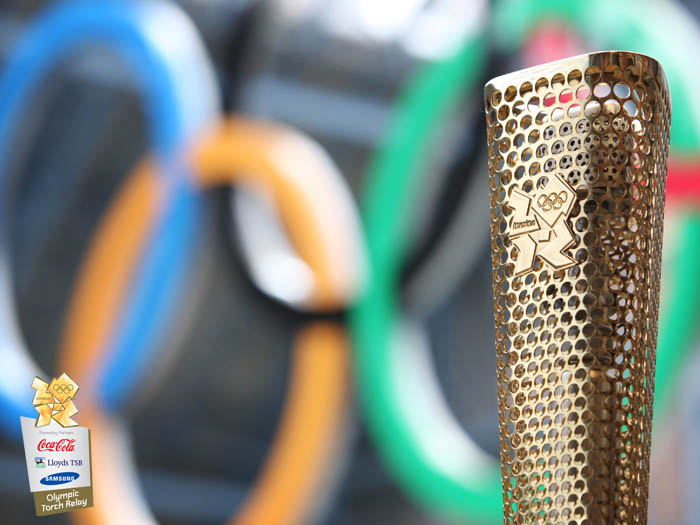Magnetic fields on the sun’s northeastern limb erupted around 17:45 UT on 16th April,
producing one of the most visually-spectacular explosions in years.
Author - Charles M0OXO
Check out the new Callsign database and Lookup facility.
QRZCQ seems a very good system with most information available as on other sites.
You might agree if you live in the southeastern United States.
Last April, a historic outburst of 202 tornadoes turned broad swaths of that part of the country into a disaster zone. “The event of April 27th and 28th 2011 was the costliest convective storm in U.S. history,” said Kevin Knupp, professor of atmospheric sciences at the University of Alabama-Huntsville. And he doesn’t just mean costly in terms of property damage — 316 people lost their lives.
Of the 202 twisters that day, 62 tore through Alabama (Photo above/left) where Knupp works. Ten of them were ranked EF 4 and 5 on the Enhanced Fujita Scale. Three tornadoes churned paths more than 120 miles long, and a large number of the twisters cut swaths more than a half mile wide (Image below). Knupp saw the results first-hand, and he’s been studying them ever since. Aided by a team of graduate students and colleagues, he’s sifted through gigabytes of data1 collected by NASA and NOAA satellites and local ground sensors. A year later, they have drawn some interesting conclusions.
One discovery was how rapidly an EF-5 spun up near the small town of Hackleburg, Alabama.
“The Hackleburg storm got its act together really quickly,” says Knupp. This particular twister formed only 50 minutes after the underlying thunderstorm appeared. For comparison, the average time for tornado formation is 2 hours. The twister blasted through north Alabama with winds over 200 mph, killing 72 people.
Knupp’s team believes that something called a “thermal boundary” set the stage for the birth of the killer.  Cool, moist air on one side of the boundary formed a low cloud base –“kind of like a wall,” he explains. Warm air from the storm ran into the wall and swept upward. Updrafts are a key ingredient of tornadoes. In this case, updrafts as swift as 75 feet per second were recorded.
Cool, moist air on one side of the boundary formed a low cloud base –“kind of like a wall,” he explains. Warm air from the storm ran into the wall and swept upward. Updrafts are a key ingredient of tornadoes. In this case, updrafts as swift as 75 feet per second were recorded.
They also noticed that many of the tornadoes seemed to cluster in space and time. Knupp offers the example of Arab and Guntersville, neighboring communities not far from NASA’s Marshall Space Flight Center: “16 tornadoes touched down in the area — 13 of them in a half hour period.”
I expect the cards to be a few weeks before they arrive but as soon as they are, Direct/OQRS will be processed within a few hours and bureau cards will follow.
Thanks for you patience guys es GL to Dindo!
The action begins on Monday evening, 2nd April, when Venus enters the outskirts of the little dipper-shaped asterism. Look west at sunset for Venus–it’s the brightest thing around–then scan the area using binoculars. The conjunction will be immediately clear. The best evening to look is tonight Tuesday, 3rd April, when the brilliant planet glides just south of the dipper’s bowl. Venus exits by the handle on Wednesday, 4th April. Venus passes through the Pleiades in this way about once every 8 years.
The Pleiades, also known as the “Seven Sisters,” are a cluster of young stars. They formed barely 100 million years ago during the age of dinosaurs on Earth from a collapsing cloud of interstellar gas. The biggest and brightest members are blue-white and about five times wider than our own sun.
Because of their distance, about 400 light years away, the Pleiades are near the limit of naked-eye visibility. When Venus joins them in conjunction, it will look like a supernova has gone off inside the cluster. Venus’s thick clouds reflect so much sunlight, the planet outshines every thing in the night sky except the Moon. Strangely, though, the Pleiades do not look puny in comparison, just delicately beautiful.
Look west just after sunset, and see for yourself.
In a series of tantalizingly close flybys to one of Saturn‘s Moons, named “Enceladus,” NASA’s Cassini spacecraft has revealed watery jets erupting from what may be a vast underground sea.
These jets, which spew through cracks in the moon’s icy shell, could lead back to a habitable zone that is uniquely accessible in all the solar system. Photo below shows dramatic plumes, both large and small, spraying water ice from many locations near the south pole of Saturn’s moon Enceladus. More than 30 individual jets of different sizes can be seen in this image captured during a flyby of NASA’s Cassini spacecraft.
Thermal measurements of Enceladus’s fissures have revealed temperatures as high as -120 deg Fahrenheit (190 Kelvin). That adds all the heat up to 16 gigawatts of thermal energy that are coming out of those cracks. Now that the orbit’s eccentricity has lessened, the heat emanating from the interior is a combination of heat produced today and in the past. But since more heat is coming out presently than is being produced, Enceladus is in a cooling off stage and the liquid water is returning to ice.

Qsl cards for the UK Special Events are now arriving from UX5UO Print Shop. The cards are for the Queens Diamond Jubilee and also for the Olympic Games, both events running this Summer in the UK.
Please have a look at the links and send me an email if you would like further advice on how to purchase cards from UX5UO service. Cards can be bought in smaller batches than normal and payment is easy via Cash, Paypal, Cheque or Bank Transfer to UK address (No Foreign Transfers or Bank Charges!). For Prices for all types of cards please scroll down this message.
Send your images or designs to either Gennady or myself and we will help as much as possible. Cards are usually 3 to 5 weeks from order and all prices below include delivery to any UK address.
Email me for further info at [email protected] 
 Basically the prices are:-
Basically the prices are:-
a) Two Colours Front 1000pcs £34.00GBP
b) Full colour Front (Matt) and B & W rear 1000pcs £49.00GBP
Smaller batches of ‘’b’’ are also available;
500 at £42.00
250 at £26.00
100 at £22.00
c) Full colour Front (Gloss) and B & W rear 1000pcs £55.00GBP
Smaller batches of ‘’c’’ are also available;
500 at £46.00
250 at £29.00
100 at £25.00
d) Full colour Front (Gloss) and Full colour rear (Matt) 1000pcs £69.00GBP
We have also a new range of cards that are single sided full
colour at £29.00GBP per 1000. I have no samples of these at
this stage.
The measurement was achieved by using the solar telescope aboard a NASA satellite, thereby bypassing the blurring caused by Earth’s atmosphere that occurs when observations are made from the ground.
A group of scientists from Hawaii, Brazil, and California has measured the diameter of the Sun with unprecedented accuracy by using a spacecraft to time the transits of the planet Mercury across the face of the Sun in 2003 and 2006.
They measured the Sun’s radius as 432,687 miles (696,342 kilometers) with an uncertainty of only 40 miles (65km). This was achieved by using the solar telescope aboard a NASA satellite, thereby bypassing the blurring caused by Earth’s atmosphere that occurs when observations are made from the ground.
Marcelo Emilio (visiting from Ponta Grossa, Brazil), Jeff Kuhn, and Isabelle Scholl from the University of Hawaii Institute for Astronomy in collaboration with Rock Bush from Stanford University, California, made the measurements of the Sun’s size with the Michelson Doppler Imager (MDI) aboard NASA’s Solar and Heliospheric Observatory (SOHO).
Transits of Mercury occur 12-13 times per century, so observations like this allow us to refine our understanding of the Sun’s inner structure and the connections between the Sun’s output and Earth’s climate.
The team is preparing to observe the transit of Venus across the Sun June 5. They expect these observations will improve the accuracy of their solar size measurement even further.
In less than nine weeks the Olympic Flame arrives and starts its 70-day journey around the UK.
We can now reveal where it’s going, when and who will be carrying it.
The Olympic Flame will come within 10 miles of 95% of people in the UK, Isle of Man, Guernsey and Jersey. It will enable local communities to shine a light on the best their area has to offer including celebrations of local culture, breathtaking scenes and dynamic urban areas.
Second new IOTA in the same day, that’s rare for me nowadays thats for sure!
Thanks to the guys on Kai Island IOTA OC-221 in Moluccas, Indonesia. YB8Y was another one logged with difficulty but after 90 minutes of frustration he was logged on 15M SSB. That’s the pressure off now number #525 is in the log so may find him again on another slot in the coming days.
They have several stations on air at the same time so good planning and lets hope the DX continues in the run up to WPX this weekend!









